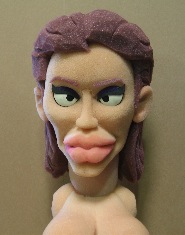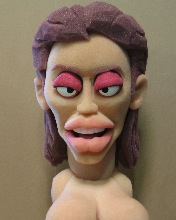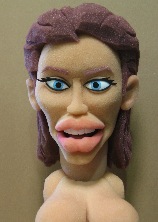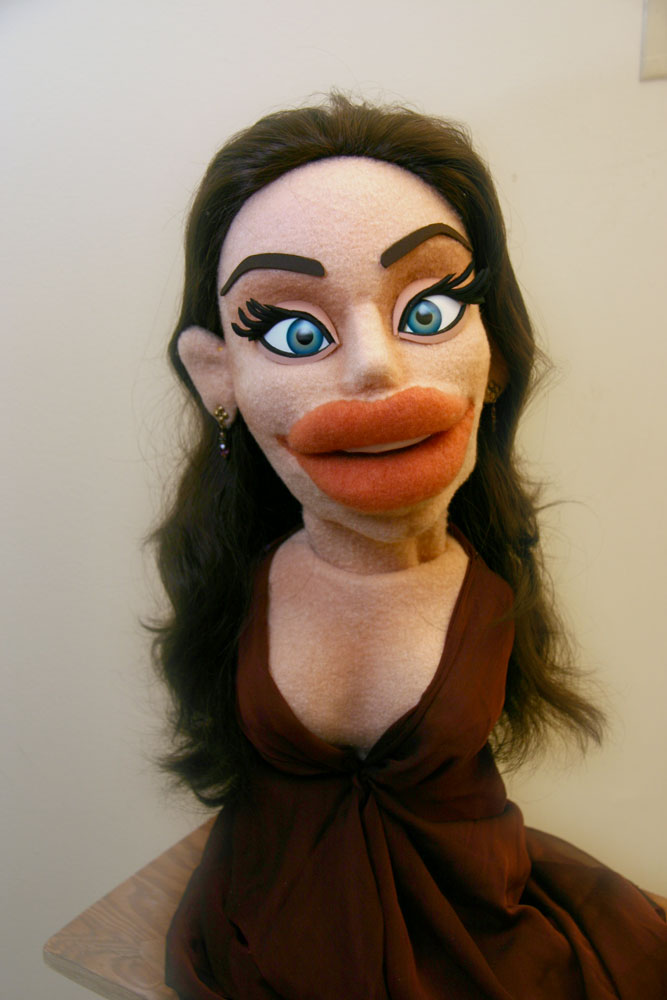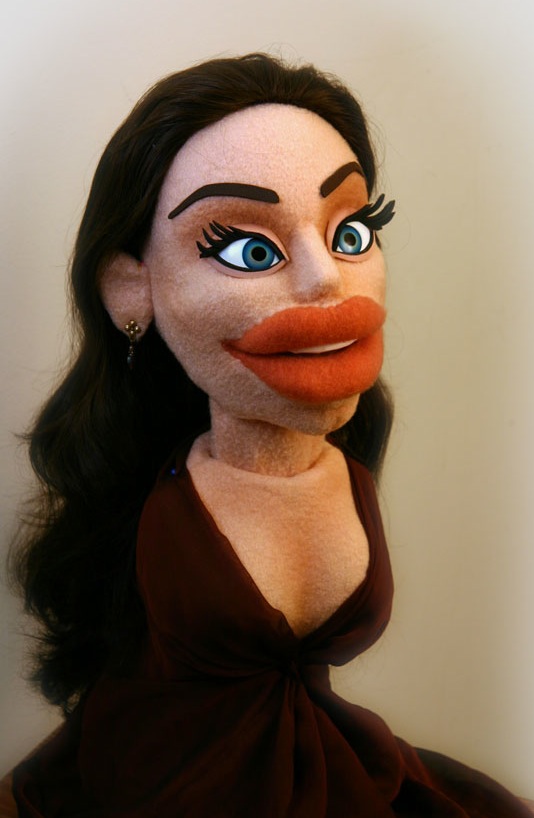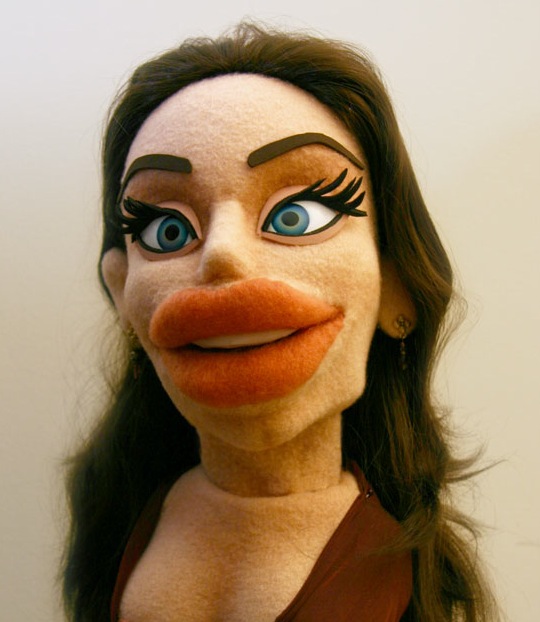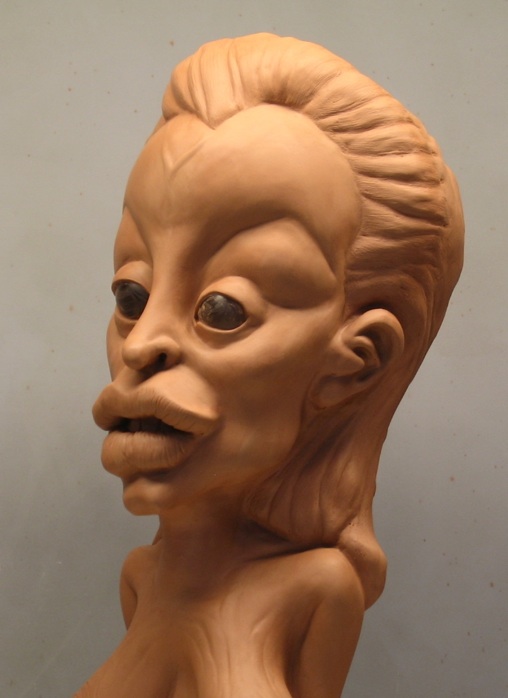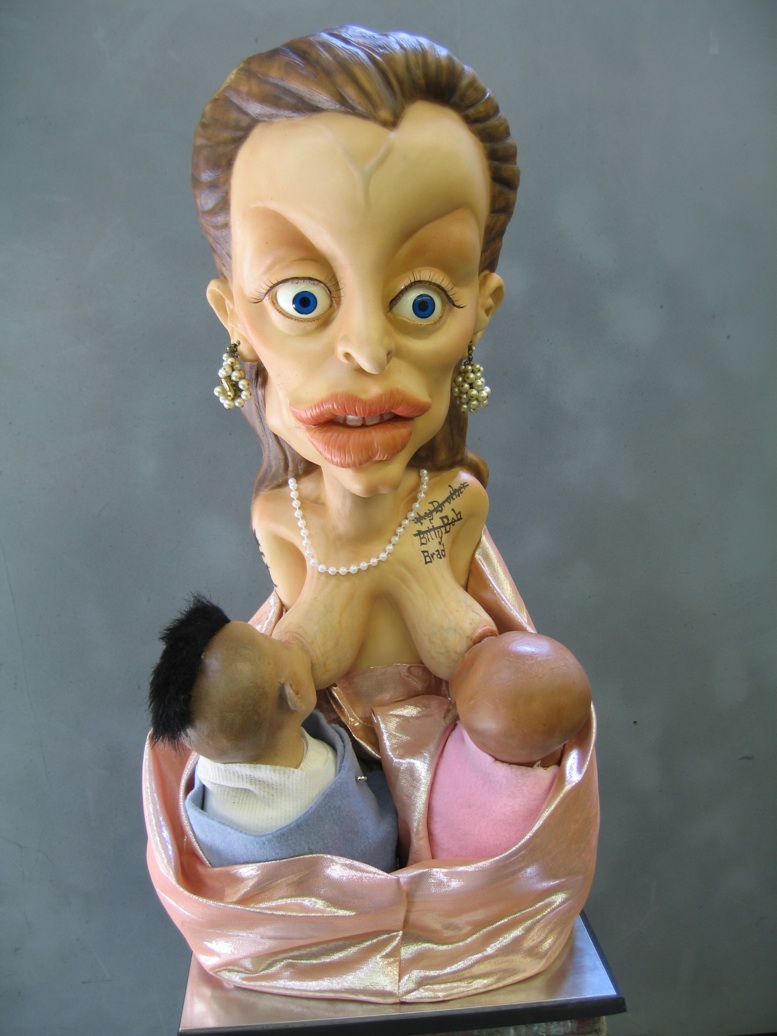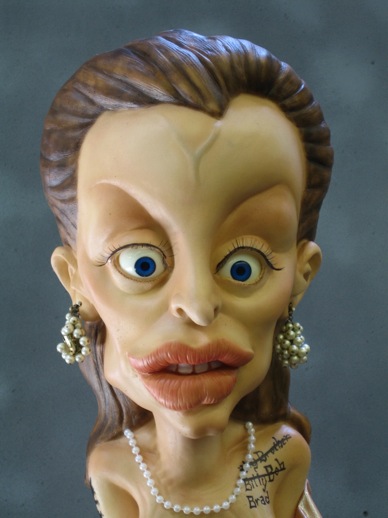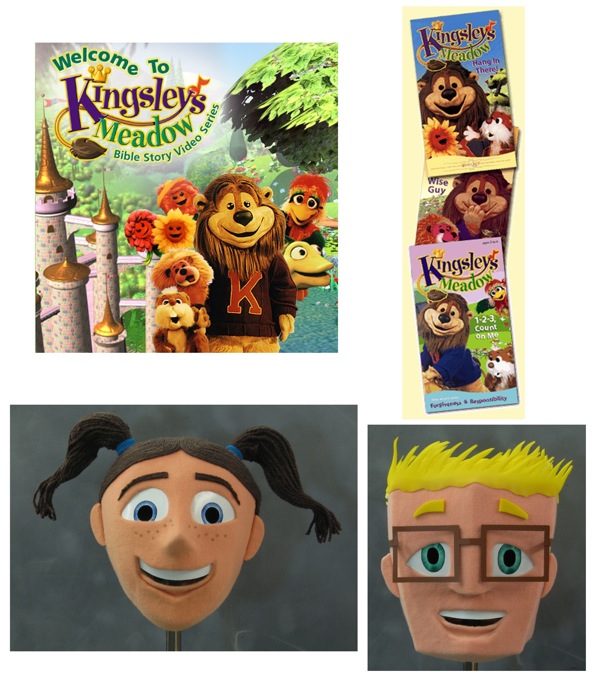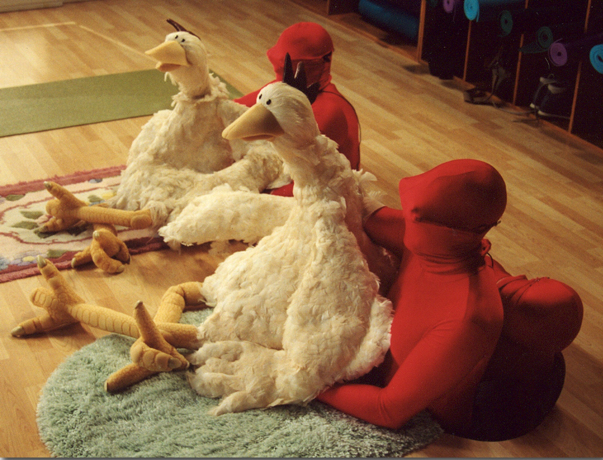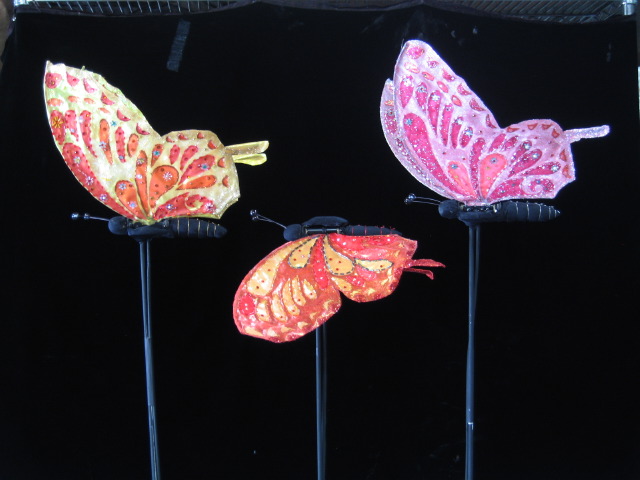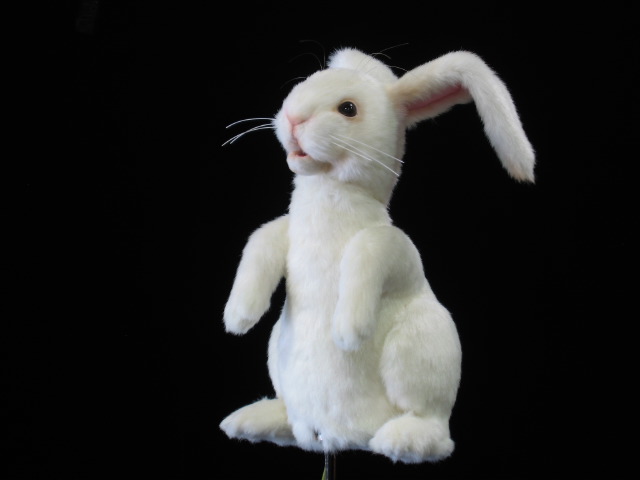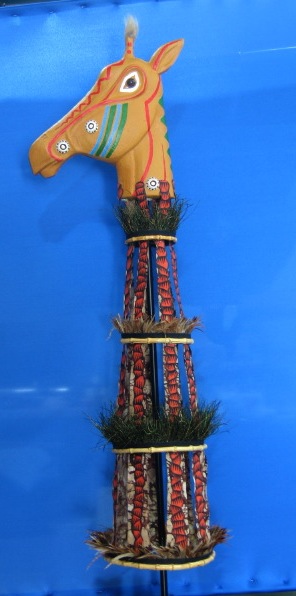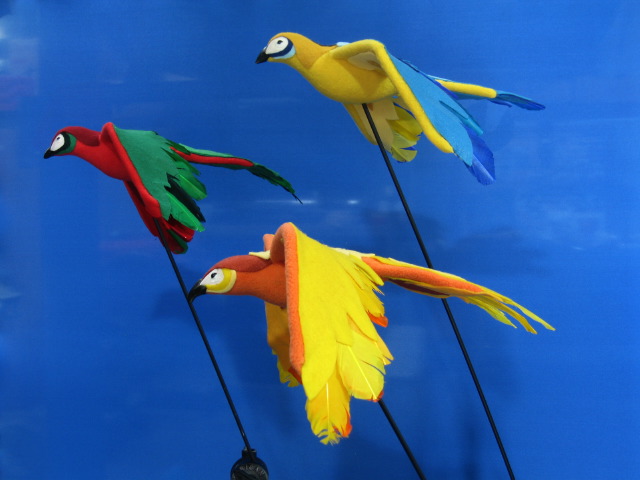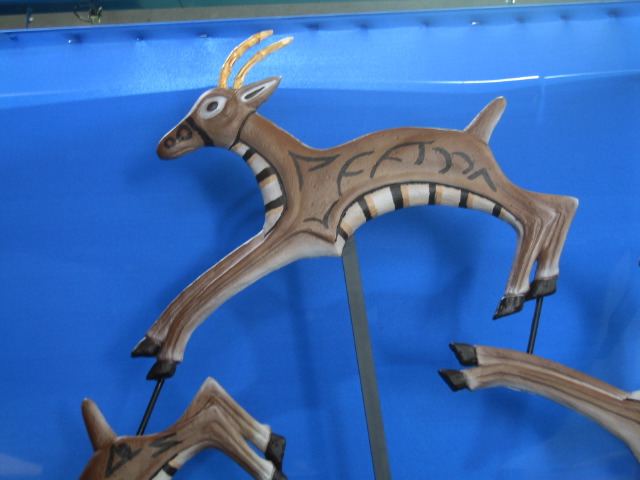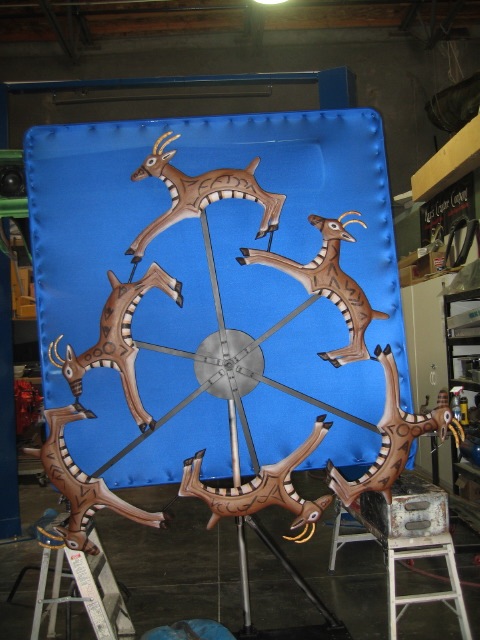|
TCS: Various Styles of Hand Puppets |
|
|
(Did you get here from our Puppets page? Great! If not, check it out, too!)
Each type of Hand Puppet has its own pros and cons, it's own features and limitations. On this page, we'll explore some of the common styles that are available. Let's approach it from the standpoint of a Celebrity Caricature. We'll show different approaches to caricaturing a cetain actress nicknamed "Angie". As you'll see, each approach used leads to a different "look": Carved and Painted Foam: A Carved and Painted Foam Hand Puppet is probably the least expensive and quickest style of Hand Puppet to produce. It's lightweight, and there is a reasonable amount of control over the likeness. The features are simplified, or puppety. But that may be exactly what you want! Also, items such as eyes, brows, mustaches, etc. may be quickly swapped in or out.
The drawbacks are: While it's quick to make one or two, caricature carving is a rare talent, and the need for many multiples may bottleneck a production line, being limited to 2 or 3 realy good artists who can "nail" the likeness. Also, the foam surface is open pored, rough-textured, and uncovered, and therefore prone to pick up dirt, and become injured. So these puppets must be gently taken care of, and stored carefully. Not a suitable choice for long-term use or episodic work. Once again: Pros: Quickest to build, least expensive, easy to do "Mr. Potatohead"-style detail switchouts on generic heads. Foam and Fleece: A Foam and Fleece Hand Puppet is the next step up, in terms of cost, durability, and popularity. These are the types of puppets you;ve seen for years on "Sesame Street", or more recently, "Crank Yankers" and "Avenue Q". Foam is carved, but then covered in a fabric, usually a stretch fleece. For animal puppets, a long-nap fleece, for human characters, short nap, smooth fleece. These end up lasting longer, and are easier to clean up if dirtied. Also, items such as eyes, brows, mustaches, etc. are easilyswapped in or out.
The drawbacks here are: the cloth covering "mutes" the features, so they are more rounded, simplified, and less crisp. Less control is available over the fine details of the caricature, so things must be communicated in broad strokes. However, when someone asks for a "Muppety" look, this is usually what they are talking about. In summary: Pros: Quick to build, mid-range cost , Sculpted and Molded: For the utmost control over sculptural detail, likeness countouring, surface texture, and color, the Sculpted and Molded method is chosen. You can achieve photorealistic replication, if that is your goal...or the effect can be entirely whimsical, as it was, for example, with Disney's TV Series "Dinosaurs". In the pictures below, the "skin" is cast and painted silicone rubber. But it could have easily been a foam latex rubber, for less translucency, Also, altough the construction process is more complex and labor intensive, the images below depict a basic hand puppet: one hand goes inside, operating the mouth and head; no other animatronic expression mechanisms were added...though they could be! (And, yes, this is a much more distorted, "mean" caricature; you also have finer control over the emotional impact you want to convey with this "Sculpt and Mold" construction method...) To reiterate: Pros: Allows for realistic to photorealistic skin texture, coloration. Great and precise control over final look. So, here you have it; three different examples, three different approaches to caricaturing a celebrity with Hand Puppets. Of course, we've created other Puppets using these and other methods. We tend to get "typecast"as making super-sophisticated animatronics, well, have a look at a sampling of our simpler side!:
(Kingsley the Lion and KidWinks Heads by TCS, chipmunk, fish, bird, and flower and mini-lion puppets by Pat Brymer)
What's New | Features | Commercials | Resume | Realistic | Whimsical | Scary | Animatronics | Prosthetics | Puppets | Waldo ® | Publicity | TCS Fun | FX FAQ | Reference | Contact Us Except where noted, all contents are the property of The Character Shop, Inc. and copyright 2010 |
